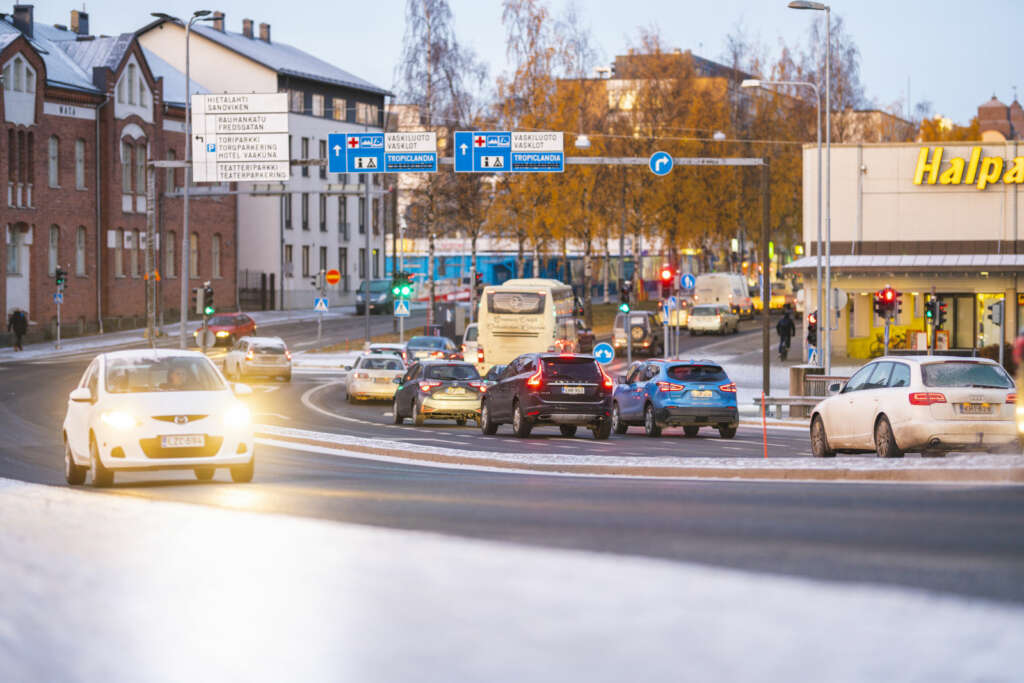
Article categories: Archive News
Transport emissions targets not easy to meet, new tool shows
Published: 9.1.2023
The City of Vaasa and Ramboll Finland have developed a dashboard to monitor the evolution of emissions from road transport and test the impact of remedial measures. The work done in Vaasa shows that achieving emissions reductions from transport does not come of its own accord but requires determined actions.
In Vaasa, carbon emissions decreased by about 30 percent between 2011 and 2019. The most significant reductions have come from electricity consumption and district heating. The biggest challenge is in road transport, where emissions have fallen by only 10 percent over the same period.
“The City of Vaasa aims to reach carbon neutrality by the end of the 2020s. Indeed, road transport is one of the most challenging emission sectors due to the large number of contributors and the different use cases. We set out to find new ways to help,” says the Director of Municipal Infrastructure in Vaasa Jukka Talvi.
The Traffic Emission Dashboard that has been developed was used to provide up-to-date information on the evolution of traffic volumes and transport-related CO2 emissions in the City of Vaasa, and to model the effects of various land use and transport measures on future traffic volumes, modes of transport and CO2 emissions. Transport projections were made for five different scenarios for 2030.
“The methods and dashboard developed in the project enable strategic level planning. Using the dashboard, it is possible to estimate the climate impacts of traffic considerably more accurately than before. This raises awareness of the environmental impact of transport and allows planners to respond more quickly,” says project leader Teemu Sihvola from Ramboll.
Achieving emissions targets not easy
The project’s ‘zero-scenario’ is based on Vaasa’s existing walking, cycling and road transport networks, as well as on infrastructure projects for which implementation decisions have already been taken. Three comparative scenarios were drawn up:
- A scenario based on technological development in which the share of electric vehicles, among other things, increases more quickly than previously assumed
- A scenario based on sustainable transport based on the perspective of a city of bicycles and the development of public transport
- A regulatory scenario at national level, where sustainable transport is driven by transport pricing
None of the above scenarios will achieve the City of Vaasa’s targets for emission reductions and carbon neutrality in road transport. Therefore, a further scenario combining measures from all the above scenarios was developed, but even these did not yet meet the carbon neutrality targets. The targets were only met when, in addition to all the above measures, unit emissions from vehicle transport were lowered further. The same result can also be achieved with a larger change in the modal split in favour of sustainable modes of transport.
“The project opened our eyes and concretely demonstrated how challenging everything is. In Vaasa, the results have put the carbon-neutral transport target centre stage, and numerous measures are under way to reduce emissions,” says Jukka Talvi.
”Many cities have invested in collecting real-time data from traffic. The project has found an application for the data that is directly linked to one of the most challenging objectives – reducing emissions from transport,” says Teemu Sihvola.
Methods and toolkit developed in Vaasa’s Transport 202X project
The Traffic Emission Dashboard developed in the Vaasa Transport 202X project can be used to show the trend of greenhouse gas emissions from transport and the variables affecting them, based on historical data, the current situation modelled on the basis of real-time data and the future modelled on the basis of forecast scenarios. Examples of variables include average transport emissions, propulsion distribution, and mode-specific number of trips and mileage. The work made use of the transport demand model BRUTUS by Ramboll.
The dashboard developed will allow active monitoring of the development of CO2 emissions in relation to different scenarios, thus facilitating decision-making.
The tool is aimed at experts and officials in charge of land use and transport planning in municipalities, but it can also be used to communicate to the public emissions from road transport, their trends and measures affecting emissions, thus engaging citizens in measures to reduce emissions. In the tool, each car that passes through a calculation point in the transport network has an impact on the climate emissions to be reported.
As such, the results of the project can be replicated at a reasonable cost in areas with an existing land use and transport pattern. The method can be extended to other municipalities and even to a general greenhouse gas emissions calculator for the entire road network in Finland.
In addition to the City of Vaasa and Ramboll, the development project was funded by the Ministry of the Environment.
